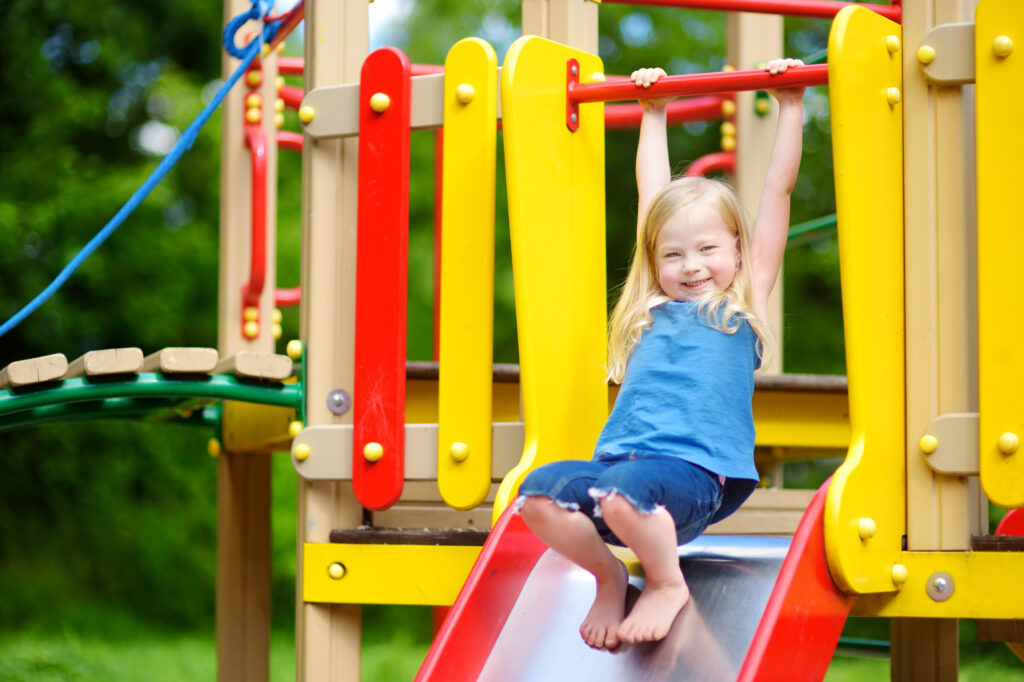The Benefits of Playing on Playgrounds

Playgrounds are more than just places for children to have fun. They’re essential environments for physical development. The benefits of playing on playgrounds are numerous, and different playground structures have their own unique benefits.
Climbing Structures
Climbing structures like monkey bars, ladders, and climbing walls develop upper body strength, coordination, and problem-solving skills. Children engage their arms, shoulders, and core as they navigate these challenges. Additionally, climbing promotes bilateral coordination, which is the ability to use both sides of the body together. This is a key skill for tasks like writing and buttoning clothing. Climbing structures also provide opportunities for proprioceptive input (awareness of body position) and grip strength development, which supports fine motor tasks like holding a pencil.
Benefits of playing on playground Swings
Swings are an excellent tool for developing core strength and balance. As children pump their legs to gain momentum, they’re also building strength and coordination. Swinging also provides vestibular input, which helps children develop a better sense of balance and spatial awareness.
Balance Beams and Stepping Stones
Balance-focused structures challenge a child’s ability to control their body while maintaining stability. Walking across a balance beam or navigating over stepping stones engages a child’s core and leg muscles. These tasks are also essential to help build foot and ankle strength. Balance structures at a playground build the foundation of a child’s dynamic balance, skills that are critical for running, jumping, and participating in sports.
Benefits of playing on playground Slides
Sliding is also a great way to work on balance, coordination, and postural control. Climbing up to the top of the slide builds strength and endurance, while the act of sliding down helps children practice sitting upright and sustaining core and trunk activation. Sliding, also provides vestibular input, which supports overall body awareness and coordination.
Tunnels or Enclosed Slides
Tunnels and enclosed slides encourage children to crawl, squat, and use their imagination as they navigate tight spaces. Crawling promotes reciprocal movement patterns as well as core and upper body strength development.
So, when your kids ask to go to the playground, think of all the benefits that playing on playgrounds is providing while they are having fun! Here are 6 great playgrounds to try out.
